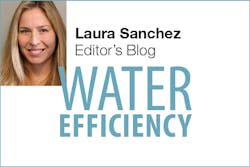When a tsunami inundated Japan’s Fukushima Daiichi Power Plant on March 11, 2011, it damaged the cooling systems of three reactors, causing a catastrophic nuclear disaster. Ever since the meltdown, authorities have wrestled with a monumental decision: what to do with more than 750,000 tons of water contaminated with a radioactive isotope.
The total cleanup costs, including decommissioning and decontamination, are estimated to reach $190 billion and take close to 40 years.
When plant owner Tokyo Electric Power Company (TEPCO) announced in July 2017 that the company planned to release the water into the Pacific Ocean, the public expressed overwhelming concern. Tritium, the water’s primary contaminant, is radioactive, although less harmful than other isotopes, according to experts. TEPCO was quick to point out that all nuclear power plants release tritium into the environment. The company also explained that it is reviewing options in order to determine the best possible solution.
“One option is to release the tritium-contaminated water into the ocean,” general manager of TEPCO’s nuclear division, Takahiro Kimoto, told VOA. “However, there are other options such as vaporizing it, but we have not decided yet which option to take to dispose of the water. Since there may be an influence on the environment, and because there have been harmful rumors about what effects it may have on people and the environment, we are still consulting with various stakeholders before finally deciding on the solution.”
According to Ken Buesseler, leading marine radiochemist at the Woods Hole Oceanographic Institute, tritium is a naturally occurring isotope. “There are natural sources up in cosmic rays interacting in the atmosphere,” he told VOA. “And the biggest source by far was the weapons testing in the 1960s. So you’re talking about adding to what’s already there. If it’s all released on one day, that’s a very different scenario for the oceans than if it’s released sequentially over the course of several years.”
TEPCO and the Japanese Nuclear Radiation Authority insist that the low concentration of tritium would do little damage to the ecosystem and could prevent a serious onsite accident. But following the 2011 disaster, many countries have banned fish imports from Japan. Fishermen are concerned that the release of additional radioactive material would further damage the aquatic environment and the industry.
If the decision were yours, what would you do with the contaminated water?

